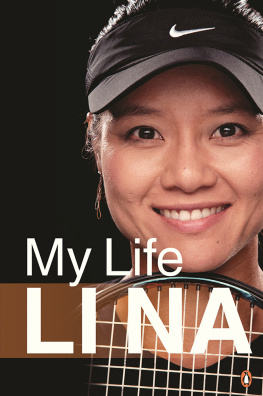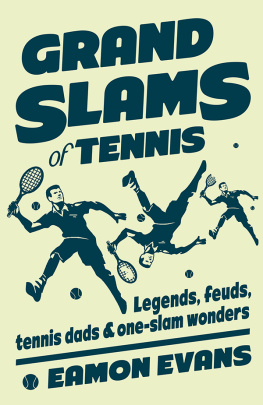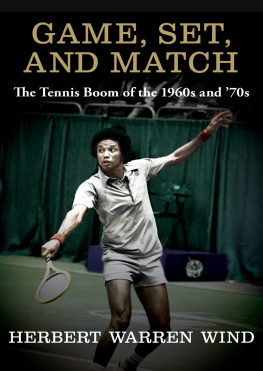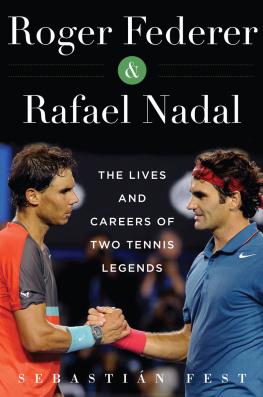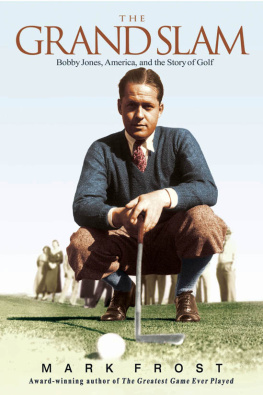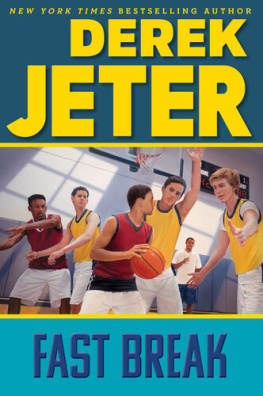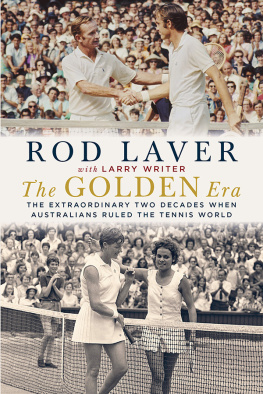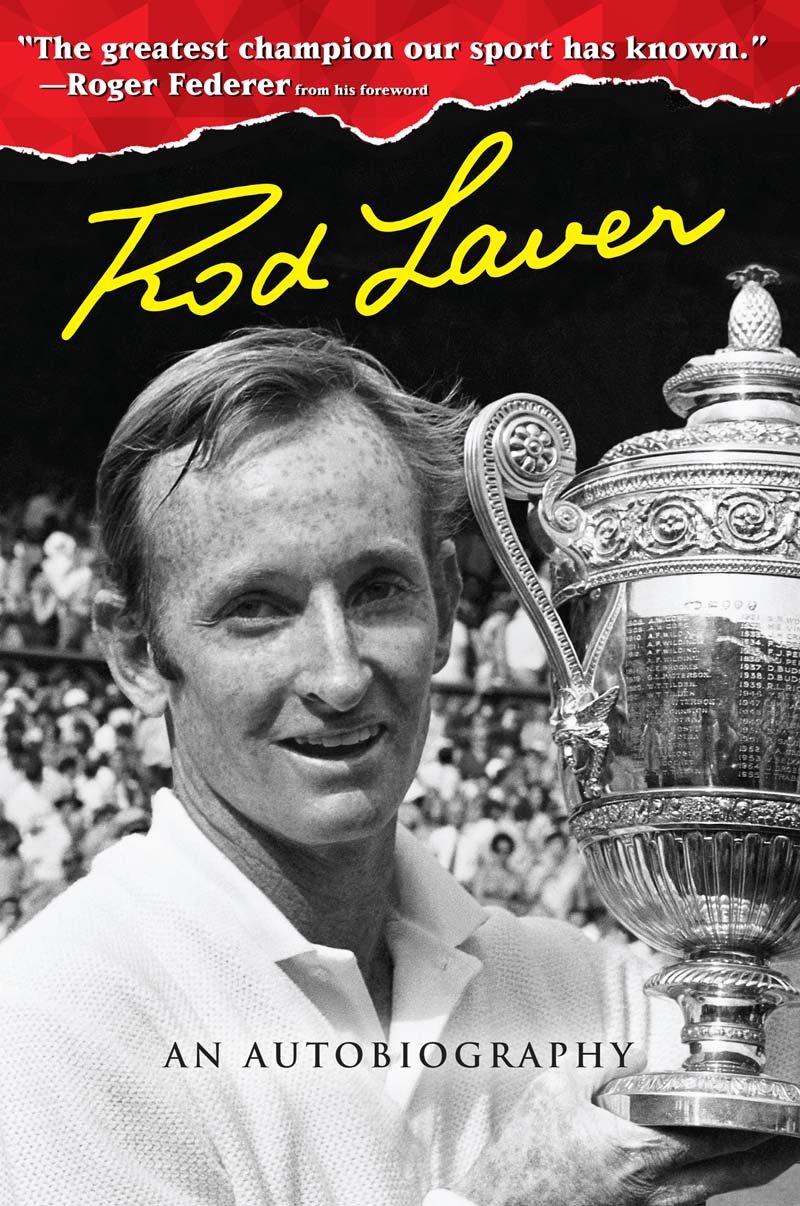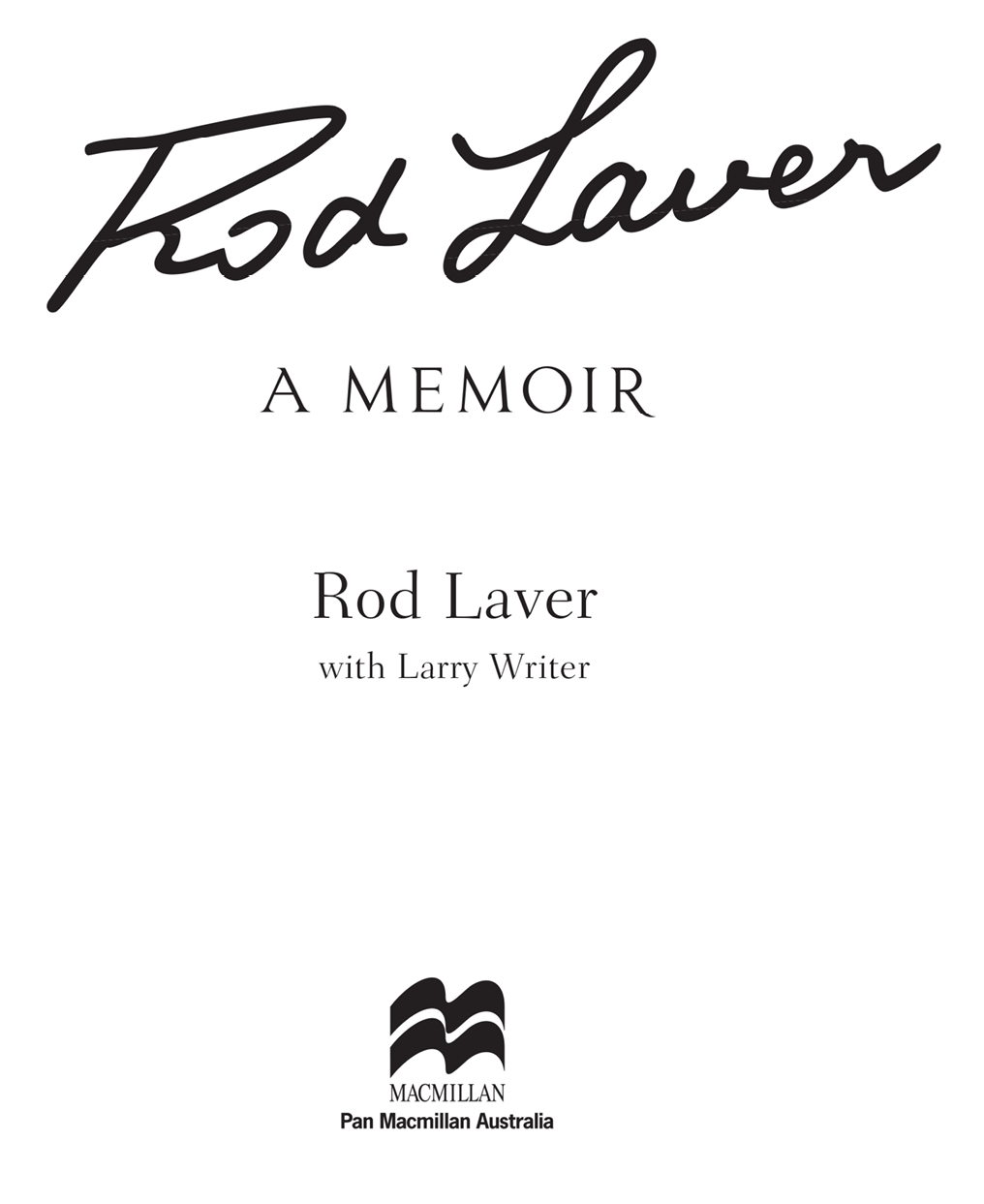
For Mary and my family
Contents
Foreword by Roger Federer
If you really love the sport you play then you must study its history to understand how it has evolved into the sport we know today.
Few sports have a longer or richer history than tennis and no player occupies a bigger part of that history than Rod Laver. From my earliest tennis memories, Rod the Rocket Laver stood above all others as the greatest champion our sport has known.
Winning all four majors in the same calendar year to complete the Grand Slam, on two separate occasions no less, is one of the greatest feats a player can accomplish. In 1962, Rod became only the second man to do this. Seven years later, Rod conquered the games Everest again to become the first player man or woman to have won the Grand Slam for a second time. No male player has completed the Grand Slam since.
When you consider the greats who have graced the world circuit since Rods second Slam in 1969 Connors, Borg, McEnroe, Becker, Edberg, Lendl, Sampras, Agassi, Nadal and Djokovic you realise just how hard it is to do. Three of us, Andre, Rafa and myself, have won all four majors but not in the same year.
This monumental achievement is what sets Rod Laver apart. This is his unique contribution to tennis history.
It wasnt until the Australian Open in January of 2006 that I actually met Rod. It was just a few days before that well-recorded occasion when, in front of 15,000 screaming centre court fans and a worldwide television audience, I broke down and cried just after Rod presented me with the Sir Norman Brookes Challenge Cup.
I was pretty relaxed but certainly tired after winning the match. When they called my name to collect the trophy from Rod Laver, in that great Melbourne Park stadium that bears his name, the magnitude of the moment finally hit me. I realised how fortunate I was to be presented the Norman Brookes trophy by Rod himself. This was a moment I will never forget.
There is a footnote to these events. At our first meeting on the Tuesday before the final, Rod and I had a chance to get to know each other. We discussed my shyness early in my career. Similarly, Rod mentioned that he, too, was shy as a young player. It was at this moment that I realised Rod and I had a lot of similarities, and I really felt comfortable in his presence.
Seeing this, my then coach and good friend of Rods, Tony Roche, arranged for Rod and me to get together after my quarter-final and semi-final matches. Tony had told me so many classic stories about Rod and the good old times from his playing days, so it was really great to be able to hear some of those experiences directly from Rod. It was very inspiring meeting someone like Rod, who is such an important part of the fabric and legacy of our sport. There is no doubt my chats with Rod over those few days gave me added impetus and inspiration in my quest for back to back Australian Open crowns.
Since those heady moments in Melbourne, Rod has witnessed my two most recent Wimbledon final victories the marathon five setter against Andy Roddick in 2009 and then against Andy Murray in 2012. I wouldnt presume to call Rod my lucky charm, but his presence at any tournament is not only motivational it also helps to bring out the best in my game. I have always appreciated it when the greats come back to the arenas in which we play, but Rods presence is always incredibly special.
Rod retired from the circuit just a few years before I was born so I never witnessed his exquisite skills live. I have watched film of him playing in finals and was mesmerised by his all-round game and incomparable court coverage. Rod seemed to have no weaknesses and while always a true sportsman on court, he was also a man of steely determination, and was incredibly strong under pressure. Rod always brought his best game to the big stage, whether it was a Grand Slam or a Davis Cup final.
Rod changed from being an amateur player to a professional one, aged 24, after claiming the Grand Slam in 1962. As a result he was ineligible to play in the amateur-only grand slam championships the Australian, the French, Wimbledon and the US until a few months before his 30th birthday in 1968, when these tournaments became open to professionals as well as amateurs. In the interim Rod missed playing for 21 grand slam titles. We can only guess how many of these he might have won.
Rod made a huge contribution to the game of tennis over his 22-year career, which started in 1956. His enormous talent was largely responsible for changing the way tennis was played. For example, Rod was the first player to master and consistently use hard hit top spin on both his forehand and backhand sides. For a left hander this was exceptional because, before the Rocket started wielding that massive left arm, no southpaw had been able to perfect the top-spin shot off the backhand side. So this was quite a feat, given the small head on those old wooden racquets. By this time Rod was on the path to becoming the No. 1 player in the world. Every other player realised they would have to eventually emulate his top-spin skills or be left behind. The result was that by the time the 1970s were in full swing, it was virtually impossible to win a big tournament unless you hit top spin like it was second nature. Rod Laver literally forced others to change the way they played the game and rethink their own playing style, technique and tactics.
Rod was also a primary catalyst for the introduction of open tennis in 1968, which completely revolutionised the structure of world tennis and, in turn, changed the game forever. By the second half of the 1960s, Rod was universally recognised as the best player in the world, with his closest rivals for that mantle being mainly drawn from the professional ranks, including the great Pancho Gonzalez and Australian stars like Lew Hoad (Rods own hero) and Ken Rosewall. As a result, the separation of the professional players from the amateur-only grand slam tournaments was becoming increasingly intolerable to anyone who had the best interest of tennis at heart.
The four grand slam events were beginning to lose their lustre as a result of not having all the best players compete. Many of the amateur officials were hugely resistant to change for fear of losing their influence and, often, total control of their countrys players. So it is to the eternal credit of a few forward-thinking tennis administrators notably Herman David, the chairman of the All England Club that the momentous decision was taken to introduce open tennis in 1968. This breathed renewed life into the game and enabled the continuing evolution of tennis into the great world sport it is today. Tennis had entered the modern era and Rod had played his part.
Rod is quite simply one of the nicest individuals I have ever met. He is warm, generous and good-humoured. He conducts himself with an endearing humility that promotes his status as not only a tennis great but a genuine legend of world sport.
Family comes first with Rod, and my wife Mirka and I have the deepest admiration for Rods absolute devotion in caring for his beloved wife, Mary, during her final years. His personal attributes of total commitment and inner strength were in play once again. Previously, Mary had been instrumental in Rods recovery from a debilitating stroke in 1998 and Rod reciprocated in full, until her passing in November 2012.
In the following pages, Rod tells the extraordinary story of a talented but shy freckle-faced kid from outback Queens land who, with the right support from the right people at the right time, was able to fulfil his fathers dream of having a son win Wimbledon and then go on to become the worlds greatest tennis player.



